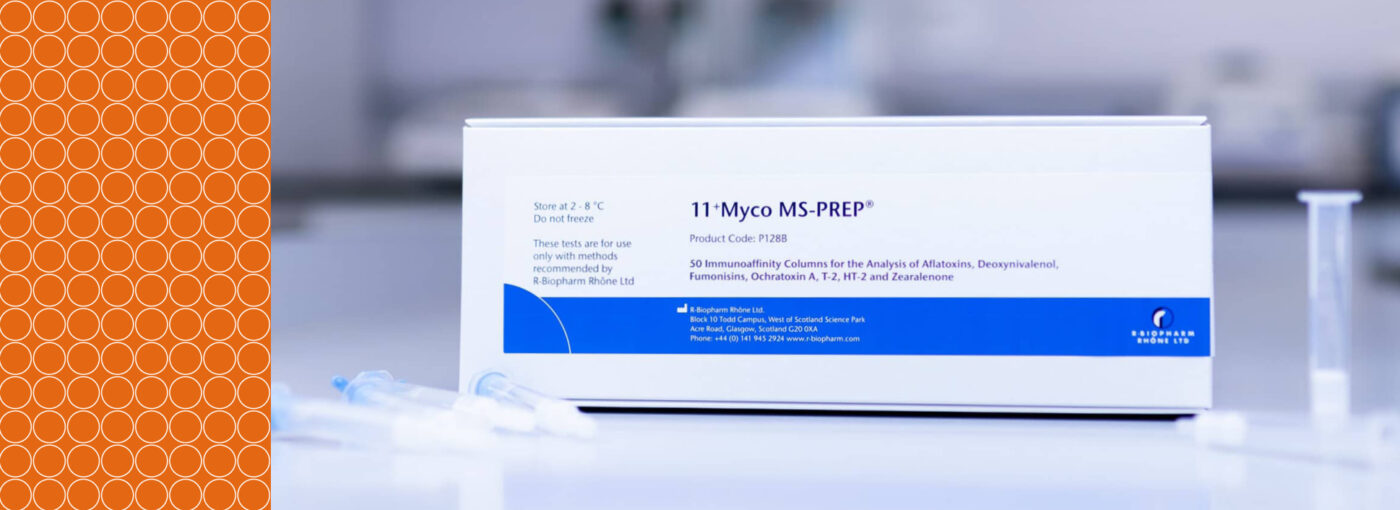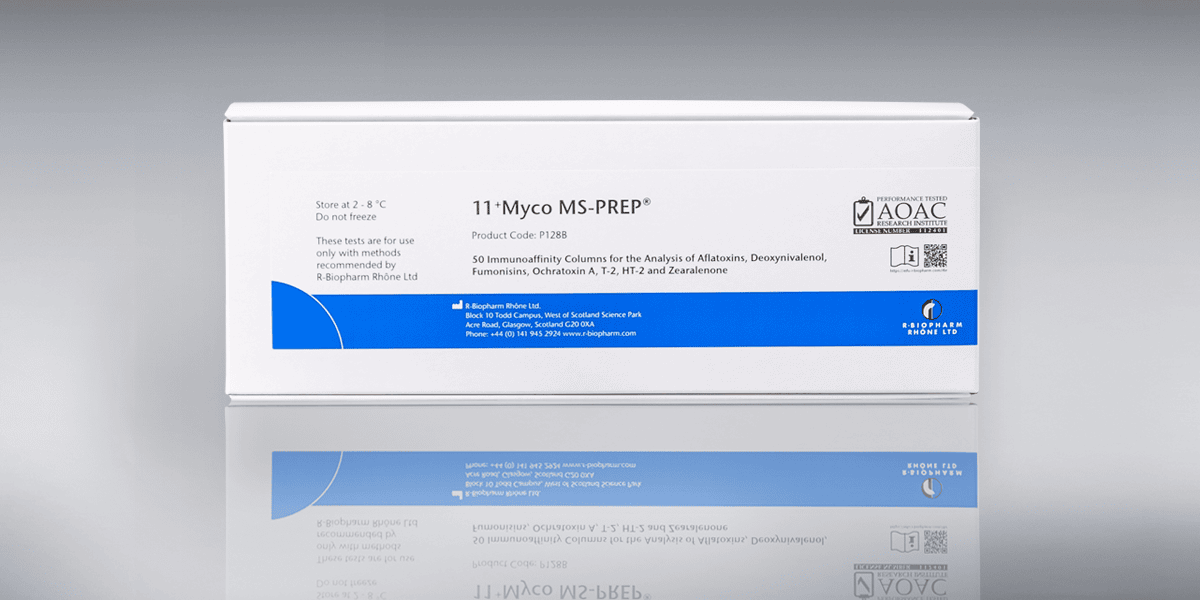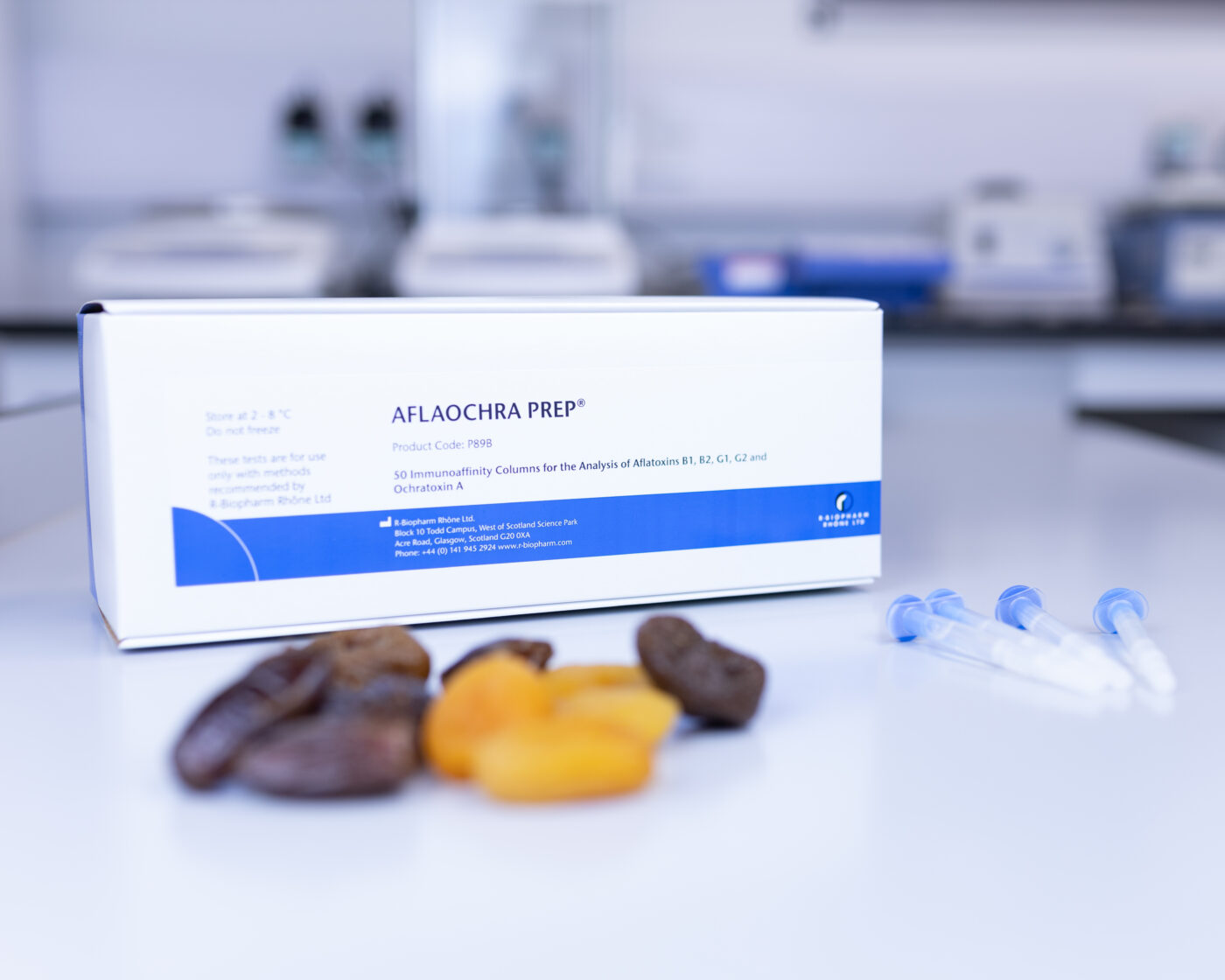
Recent news in Food & Feed Analysis
- Home
- /
- Increasing use of multi-mycotoxin...
Increasing use of multi-mycotoxin methods for routine analysis

The constant surveillance of food safety is becoming more and more critical as it affects human and animal health. During the last decade, considerable attention has been drawn to mycotoxins, secondary metabolites produced by fungi. These toxins are present in food and feed and are responsible for carcinogenic effects and various diseases. Therefore, testing for their presence is essential.
EU regulations for mycotoxins are complex with varying limits applying to specific commodities. This, along with the fact that mycotoxins can co-exist in commodities, has created an increasing trend in multi-mycotoxin analysis within the food and feed industry. As a result, there has been greater demand for multi-toxin immunoaffinity columns to effectively remove sample matrix from complex commodities such as animal feeds to ensure compliance with EU method performance criteria.
In response, R-Biopharm Rhône has created an immunoaffinity column which allows detection of 11 or more mycotoxins using a single extraction method. The sample is extracted in methanol, which is diluted to a suitable concentration, before applying to the column which removes any residue of sample matrix prior to injection onto the LC-MS/MS system. The composition of the extraction solution and concentration of solvent applied to the immunoaffinity column has been optimized to ensure suitable recoveries are obtained for both hydrophilic analytes such as DON and for lipophilic analytes such as ZON.
Results obtained are in line with EU legislation (EU 401/2006) with examples for various matrices illustrated in the table. Since all matrix components are removed there is no requirement to correct for recovery using matrix matched or isotopic labelled standards.
Figure 1: Results for the analysis of various matrices spiked at EU legislative levels using 11+Myco MS-PREP®
Spiked % Recovery (ppb) (%RSD)
| Analyte | Maize 1 | Maize 2 | Silage | Forage | Small Animal Forage | DDGS |
|---|---|---|---|---|---|---|
| Aflatoxin G2 | 108.4 (3.0) | 96.6 (15.3) | 83.1 (3.6) | 80.2 (6.0) | 75.1 (7.3) | N/A |
| Aflatoxin G1 | 103.1 (1.3) | 106.9 (7.4) | 85.7 (3.6) | 94.1 (9.6) | 83.3 (5.1) | N/A |
| Aflatoxin B2 | 105.9 (1.9) | 107.9 (11.2) | 81.4 (3.0) | 84.3 (6.0) | 80.8 (6.3) | 98.1 (4.1) |
| Aflatoxin B1 | 89.8 (7.7) | 135.3 (5.4) | 87.2 (11.6) | 94.0 (7.0) | 76.8 (5.3) | 94.3 (3.2) |
| Total AFT | 101.8 (1.8) | 111.8 (10.8) | - | - | - | - |
| Ochratoxin A | 99.2 (17.1) | 101.4 (17.3) | 82.2 (4.3) | 86.0 (4.0) | 83.7 (4.5) | 94.3 (3.4) |
| Fumonisin B1 | 90.3 (9.6) | 78.0 (19.5) | 83.7 (6.1) | 84.6 (3.1) | 80.8 (1.9) | N/A |
| Fumonisin B2 | 90.3 (10.0) | 99.7 (19.3) | 88.9 (4.3) | 86.7 (3.4) | 86.5 (5.5) | N/A |
| Total FUM | 90.3 (8.6) | 85.2 (17.9) | - | - | - | - |
| Deoxynivalenol | 98.6 (16.2) | 97.6 (13.4) | 89.4 (0.2) | 85.4 (1.7) | 87.0 (0.8) | N/A |
| Zearalenone | 94.8 (17.8) | 115.6 (10.6) | 102.1 (3.6) | 103.0 (1.5) | 98.6 (1.4) | N/A |
| T-2 | 101.8 (6.9) | 104.0 (20.1) | 86.7 (1.2) | 87.6 (3.5) | 83.1 (5.3) | 91.4 (0.9) |
| HT-2 | 125.1 (1.2) | 124.6 (10.1) | 90.7 (3.9) | 87.5 (3.1) | 89.7 (2.8) | 97.7 (8.6) |
| Total T-2 / HT-2 | 113.4 (3.4) | 114.3 (7.9) | - | - | - | - |
In conclusion, multi-toxin methods are becoming more popular due to increase demands and the methods can offer many advantages to an analyst. Not only do they save time, but they also reduce the amount of equipment, consumables and reagents required. As a result, the overall cost can be reduced while sample throughput is increased.
Download our posters here:



